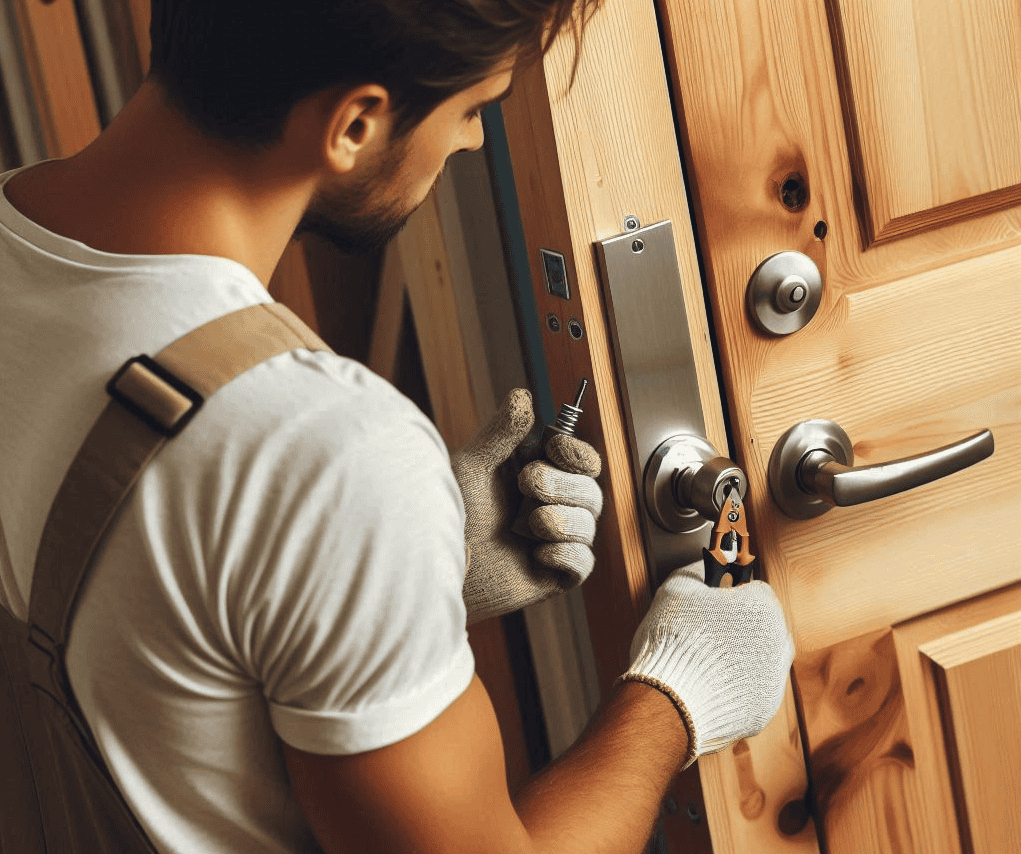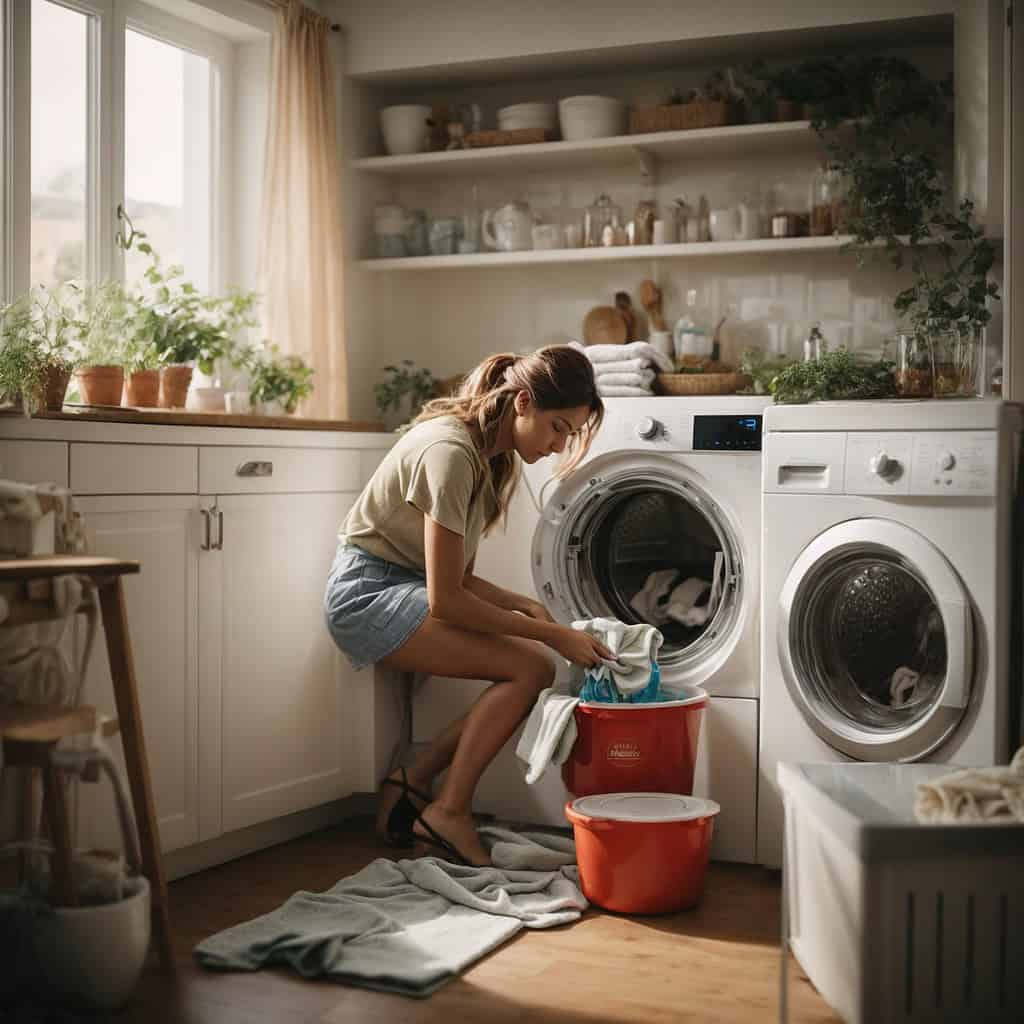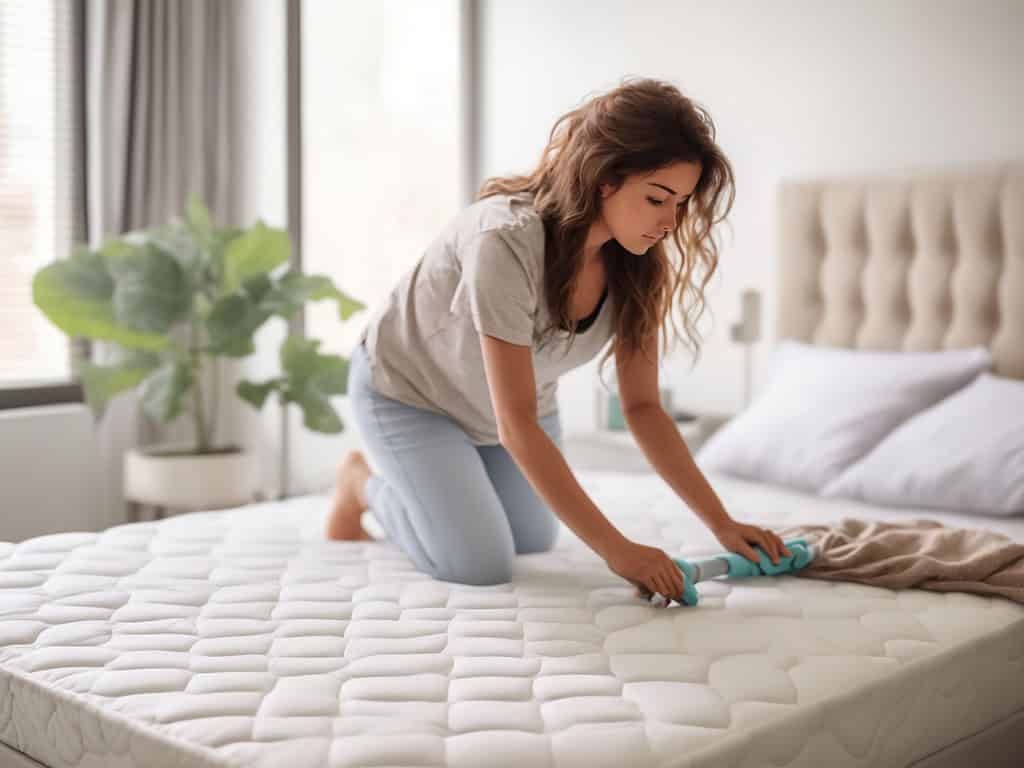Welcome to our detailed guide on fixing a broken doorknob, a handy skill every homeowner should master. Doorknobs, small as they may seem, play a pivotal role in the safety and functionality of our homes. They can, however, succumb to several common problems such as jamming or becoming loose over time.
Whether it is a minor annoyance or a major security concern, understanding how to address these issues could be a lifesaver. This article will equip you with the knowledge to diagnose doorknob problems, choose the right tools, and successfully fix or replace your broken doorknob. Let’s get started and let this be an opportunity to hone your home maintenance skills.
Understanding Doorknob Mechanics
Types of Doorknobs
Recognizing the type of doorknob you have is the first step in any repair or replacement project. Generally, doorknobs can be categorized into three main types: passage, privacy, and keyed entry. Passage knobs are most common in interior doors where privacy is not a concern, such as closets or pantries.
Privacy knobs, featuring locking mechanisms skin-deep enough for bathrooms and bedrooms, allow for simple push-button or turn thumb locks. Keyed entry knobs, providing the highest security, are used for exterior doors and have keyed locks.
This classification is crucial for home maintenance enthusiasts when selecting the right hardware for replacement or when planning upgrades. Choosing the right type meets functional requirements and ensures consistency with home security standards.
Special attention to the specific features of each doorknob type can prevent maintenance issues. For instance, ensuring that all exterior doors have properly functioning keyed entry knobs can significantly enhance home security. Regular checks and maintenance of these can prevent unexpected failures and lockouts.
Common Reasons Why Doorknobs Break
Understanding common failure points in doorknobs is essential for efficient troubleshooting and repair. The most typical issues include loose screws, worn-out lock mechanisms, or misaligned parts. Loose screws, often resulting from regular usage, can simply be tightened to fix the problem. However, worn-out parts may require more detailed attention, such as lubrication, adjustment, or outright replacement.
Preventive maintenance such as periodic tightening of screws and lubrication of moving parts can greatly reduce the occurrence of these common issues. Regular maintenance checks not only extend the life of the doorknobs but also enhance their function and reliability.
Moreover, recognizing the early signs of doorknob failures can save significant time and investment in the long run. Signs like increased difficulty in turning the knob or unusual looseness can indicate the need for immediate maintenance, thus preventing more serious damage that could necessitate complex repairs or complete replacement.
Diagram of a Typical Doorknob Assembly
A thorough understanding of doorknob assembly is imperative for any repair or replacement task. A typical doorknob consists of the knob itself, the spindle, a latch assembly, strike plate, and lock mechanism (if applicable). The knob attaches to the spindle, which runs through the door to the latch assembly on the opposite side, allowing the knob to activate the latch when turned.
Providing a visual breakdown via diagrams aids immensely in understanding each part’s role and relation to the others. For DIY enthusiasts, being able to visualize this can demystify repairs and make DIY projects more approachable and less daunting.
Such knowledge is not just practical; it is empowering. Understanding how these components work together provides insight to handle maintenance and minor repairs independently. This self-sufficiency can lead to significant savings and provides a rewarding sense of accomplishment.
Tools Required for Fixing a Doorknob
Basic Toolkit Essentials
Every home maintenance enthusiast knows the importance of a well-equipped toolbox 🧰. To tackle a doorknob repair, you’ll need several key items. A set of screwdrivers, both flathead and Phillips, would be handy as doorknobs typically have screws that may require one type or the other. Additionally, an adjustable wrench and a set of Allen wrenches can be vital for handling bolts and set screws that are commonly found in more modern doorknob assemblies.
Investing in quality tools pays off in the long run. High-quality screwdrivers with magnetic tips can prevent screws from falling and getting lost, a common issue when working with small hardware. Moreover, tools with ergonomic grips make the work easier on your hands, especially during tough screws or prolonged repairs.
Keeping these tools organized and in good condition is equally important for those serious about home maintenance. A dedicated tool chest or a portable toolbox ensures you have all the necessary tools at your fingertips, saving time and preventing damage to your tools when not in use.
Essential Tools for Fixing Doorknobs
Tool |
Purpose |
Tip for Maintenance Enthusiast |
|---|---|---|
| Phillips Screwdriver | Tightens or loosens cross-head screws | Opt for ones with magnetic tips |
| Flathead Screwdriver | Works with single-slotted screws | Keep multiple sizes for versatility |
| Adjustable Wrench | Useful for bolts and nuts | Get one with a comfortable grip |
| Allen Wrench Set | Needed for hexagonal indentations | Ensure a complete set for all sizes |
Specialty Tools (If Needed)
While basic tools cover most tasks, certain doorknob repairs might require more specialized tools. For instance, a lock rekeying kit might be essential if you’re planning to change the key that operates the lock without replacing the entire locking mechanism. Similarly, a door alignment tool or a digital caliper can help precision-measure and align critical parts, ensuring the doorknob functions smoothly after repair.
Understanding when to use these specialty tools can elevate your DIY projects from basic repairs to professional-level work. For example, using a torque wrench to ensure bolts are tightened to the manufacturer’s specifications can prevent damage from over-tightening, prolonging the life of the mechanical parts.
If you are a DIY enthusiast like me, looking to expand your skills, familiarizing yourself with the use of these specialty tools can also open up new possibilities for home improvement projects. Each new tool learned not only adds to your ability to maintain and improve your home but also to your overall enjoyment and satisfaction in DIY.
Safety Equipment and Precautions
Safety must always come first in any home repair task. When fixing a doorknob, simple safety equipment such as work gloves and safety glasses can prevent common injuries. Gloves protect your hands from sharp edges and small splinters, while safety glasses keep your eyes safe from flying debris, especially when working with powered tools or striking components with a hammer.
Incorporating safety practices into your routine not only prevents accidents but also shows a professional approach to home maintenance. Keeping a first aid kit nearby is a wise precaution, and maintaining a clean work area can prevent falls or other mishaps.
For those passionate about home maintenance, adopting and promoting safe work habits contribute to a sustainable DIY lifestyle. Teaching others about the importance of safety, through community workshops or online forums, can further enrich your own understanding and encourage a culture of careful and responsible DIY work within the community.
Equipped with the right tools, knowledge, and safety measures, you can tackle doorknob repairs with confidence, knowing that you are prepared to handle each step of the process safely and effectively. These methods not only keep your home in top shape but also ensure that your DIY activities are enjoyable and injury-free.
Fixing a Doorknob – Step-by-Step Guide
Troubleshooting the Issue
The first step in solving any doorknob issue is effective troubleshooting. Begin by gently testing the doorknob’s motion. Is it loose, sticking, or not moving at all? These observations help in pinpointing the problem, whether it’s due to loose parts, alignment issues, or internal damage. For instance, a wobbly handle typically indicates loose screws, whereas stiffness might suggest a need for lubrication or realignment of the latch mechanism.
It’s beneficial for homeowners to have a maintenance checklist for routine assessments of door hardware. Regular checks can prevent small issues from escalating into larger problems that might require more extensive repairs or replacements. Tracking the status of home hardware also helps in maintaining a safe and functional living environment.
By understanding these signs and how to address them, homeowners can save time and avoid the inconvenience of unnecessary repairs. Knowing when and how to tackle each problem not only enhances the longevity of the door hardware but also ensures that the household remains secure.
Troubleshooting Common Doorknob Problems
Problem Identified |
Possible Causes |
Immediate Actions |
|---|---|---|
| Loose Doorknob | The screws are not tight | Tighten all visible screws |
| Sticky Doorknob | Dirt buildup or misalignment | Clean and realign the latch |
| Doorknob Won’t Turn | Internal mechanism jam or damage | Lubricate or replace the mechanism |
Step-by-Step Repair for Each Identified Issue
After identifying the problem, a detailed action plan ensures that repairs proceed smoothly. If the issue is loose screws, use an appropriate screwdriver to secure them tightly, ensuring not to strip the screw heads by applying excessive force. For sticky mechanisms, disassemble the doorknob if necessary, clean all parts with a mild cleaner, and realign the latch with the strike plate to ensure smooth operation.
Should the doorknob not turn at all, the repair might involve more detailed work. Apply a penetrative lubricant to loosen any stuck parts, and let it sit for a few minutes. If the problem persists, consider disassembling the doorknob to inspect and possibly replace the internal locking mechanism. This approach not only restores functionality but also provides an opportunity to upgrade to a more durable or aesthetically pleasing doorknob.
Each type of repair enhances a homeowner’s skill set and understanding of household maintenance, reinforcing the need for a well-stocked tool kit and the knowledge to use it effectively. These fixes not only save costs on professional repair services but also enrich the DIY experience, offering a deep sense of accomplishment and self-reliance.
Installing a New Doorknob (if needed)
If repairs are not sufficient, installing a new doorknob becomes necessary. Start by removing the existing doorknob, usually by unscrewing it from the door. Follow the manufacturer’s instructions to align the new doorknob components, install them, and secure them with screws. Test the function several times to ensure that the new installation is smooth and secure.
Choosing the right doorknob involves considering both functionality and aesthetics. Selecting a doorknob that matches the style and finish of other hardware in the home maintains design consistency. Additionally, opting for a doorknob with enhanced security features, such as high-grade locks, can provide extra peace of mind.
This installation process, while straightforward, can also highlight the need for ongoing maintenance and timely upgrades. Regular updates of hardware fixtures not only keep the home looking modern but also ensure that security standards are met. Ensuring proper installation and regular updates can enhance both the value and safety of the home.
These steps empower homeowners to maintain and enhance their living spaces efficiently, bringing practicality and personal satisfaction to the forefront of home maintenance activities.
Door Knobs from Amazon
[amazon table=”1352″]When to Call a Professional
Issues that Likely Require a Locksmith
Sometimes, a doorknob issue might extend beyond a simple DIY fix and require the expertise of a professional. Key situations where a locksmith might be necessary include a broken key stuck in the lock, complex locking mechanisms failing, or when security upgrades are needed for enhanced protection. These issues often demand specialized tools and expertise that go beyond typical household maintenance capabilities.
Recognizing when professional help is needed not only ensures that the repair is done correctly but also helps in maintaining the integrity of the home’s security system. For example, trying to extract a broken key without the proper tools can further damage the lock, leading to more costly repairs or replacements that could have been avoided.
For those passionate about home maintenance, understanding the limits of DIY repairs is just as important as the skills involved in performing them. Knowing when to call in a professional can save both time and money, and prevent potential security risks.
Situative Analysis for DIY vs. Professional Repair
Issue |
DIY Feasibility |
When to Call a Professional |
|---|---|---|
| Loose or squeaky doorknob | High | Not necessary |
| Broken key in lock | Low | Immediately required |
| Upgrade to high-security locks | Low | Recommended for installation |
How to Find a Reputable Professional
Finding a reliable and skilled locksmith is crucial when professional help is required. Start by seeking recommendations from friends, family, or neighbors who have had similar work done. Trusted referrals are often the best way to ensure quality service. Additionally, checking online reviews and ratings on trusted platforms can provide further insight into the reliability and professionalism of local locksmiths.
It’s important to verify the credentials and certification of any locksmith. A legitimate professional should be licensed and insured, providing peace of mind that they are qualified and covered should any damages occur. Always ensure to ask for identification and licensing before allowing any work to begin.
Lastly, get an estimate before agreeing to any services. This should include a detailed breakdown of costs for both labor and any necessary parts. Clear communication about pricing upfront can prevent unexpected costs, ensuring that both parties are clear about the service and charges.
Importance of Timely Professional Intervention
Delaying necessary professional repairs can lead to larger problems down the line. For instance, a malfunctioning lock might seem like a minor inconvenience but could compromise the security of your home if not addressed promptly. Timely intervention by a professional not only resolves the issue efficiently but also ensures the safety and security of your property.
Regular maintenance checks and being proactive about potential issues can often prevent emergencies. However, when they do occur, quick action can often mitigate the risk of further damage or security breaches. This proactive approach to home maintenance ensures that issues are handled professionally and efficiently, maintaining the overall well-being of your home.
By understanding when professional expertise is needed, homeowners interested in DIY maintenance can make informed decisions, ensuring that their home remains secure and functional. This balance between DIY efforts and professional intervention is key to effective home maintenance.
Maintenance Tips to Prevent Future Issues
Regular Maintenance Practices
Regular maintenance is the key to extending the life and functionality of your home’s doorknobs. Start by scheduling routine checks every few months to tighten any loose screws and to lubricate the locking mechanisms. This simple step can prevent many common issues such as sticking or squeaking doorknobs. Use a light machine oil or graphite lubricant for best results, as these products do not attract dirt or gum up the mechanisms.
Keeping your doorknobs clean is also essential. Dust and grime can accumulate, especially on exterior doorknobs, impairing their function and aesthetics. Wipe down your doorknobs with a damp cloth using a mild soap solution, and dry them thoroughly to prevent rust or corrosion, particularly if they are made of metal.
For those passionate about home upkeep, maintaining an organized log of these maintenance activities can be advantageous. Not only does it help in keeping track of when the last maintenance was performed, but it also provides useful data on the lifespan of the hardware used in the home. This proactive approach ensures that minor problems can be addressed before turning into major repairs.
Routine Maintenance Checklist for Doorknobs
Task |
Frequency |
Tips |
|---|---|---|
| Tighten screws | Every 3-6 months | Check all visible screws |
| Lubricate mechanisms | Once a year | Use graphite lubricant or machine oil |
| Clean surfaces | As needed | Mild soap or detergent, dry thoroughly |
Signs of Wear and Tear to Watch For
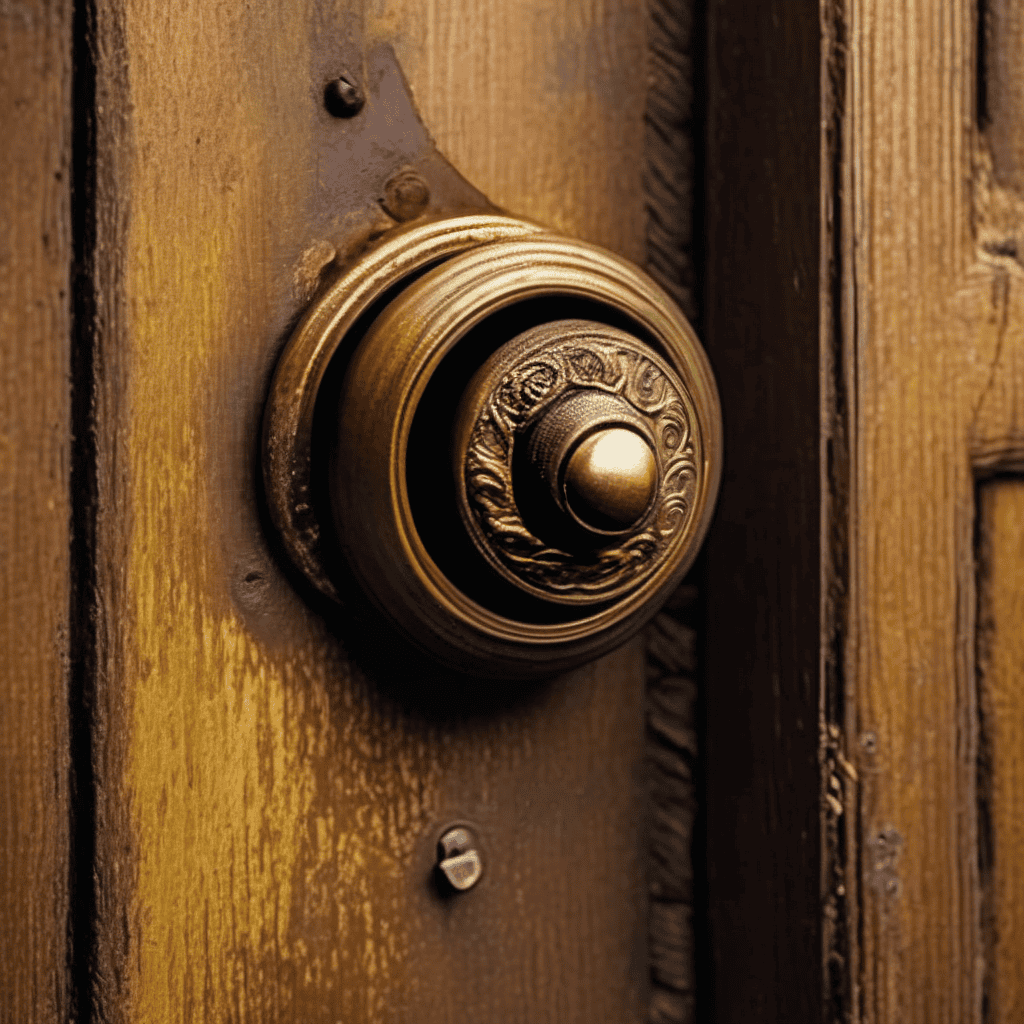
Awareness of the signs of wear and tear can significantly contribute to proactive home maintenance. Common indicators include rust on metal components, cracks in plastic or wooden knobs, and increasing difficulty in turning the handle. When these signs appear, it’s often a hint that the doorknob needs either a thorough servicing or a replacement.
For those deeply involved in home maintenance, understanding the materials and construction of your doorknobs can provide insights into their potential longevity and care needs. For instance, brass doorknobs may require polishing to maintain their appearance, while stainless steel types generally demand less maintenance but might need regular lubrication for smooth operation.
Moreover, changes in seasonal conditions can affect the performance of your door hardware. Expansion during hot weather or contraction in the cold can cause misalignment. Adjusting the fit or alignment of the latch and strike plate during these times can prevent lasting damage and ensure continued easy use.
Incorporating Preventive Replacements
Sometimes preventive maintenance may include preemptive replacement of parts that show excessive wear or are past their typical lifespan. Replacing a doorknob before it fails not only ensures your home’s security but also allows you to upgrade to newer, more efficient models. This is particularly relevant for exterior doorknobs, where security is paramount.
When considering replacements, choose doorknobs that match the functionality needs and aesthetic style of your home. Additionally, selecting doorknobs with warranties can offer peace of mind, knowing that they can be replaced if they fail early.
Lastly, incorporating technology such as smart locks might be worthwhile for those interested in enhancing home security and convenience. While these installations might seem daunting, they often provide significant returns through enhanced functionality and integration with home security systems.
By understanding and implementing these proactive maintenance strategies, any home maintenance enthusiast can effectively extend the life of their door hardware, ensure functional and aesthetically pleasing outcomes, and contribute to the overall well-being and security of their living space.
Wrapping up
As we wrap up this comprehensive guide on fixing a broken doorknob, it’s important to reflect on the key lessons and the empowering nature of DIY home maintenance. Mastering the steps to diagnose, repair, or replace a doorknob not only boosts your practical skills but also enhances your confidence in tackling similar home repairs. Remember, the journey from troubleshooting to executing the fix is as rewarding as it is educational.
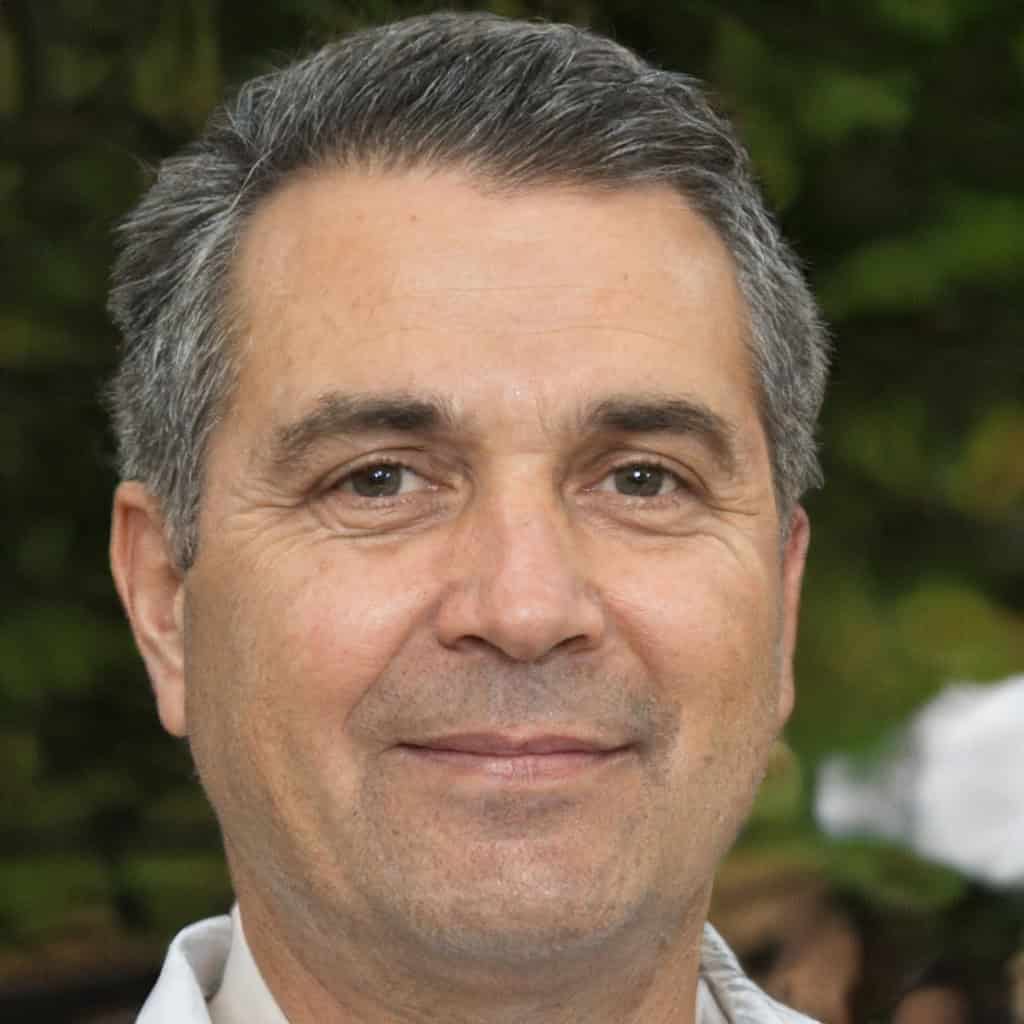
Dave Johnson is a mechanical engineer with over two decades of experience in the semiconductor industry. He’s known for his exceptional ability to fix almost any mechanical and electronic device, from leaking faucets to lawnmowers – he is definitely your go-to neighbor for household maintenance issues. When he’s not elbow-deep in his garage doing household repairs, you’ll find him sharing his expertise on fixing everyday maintenance challenges on this site.


